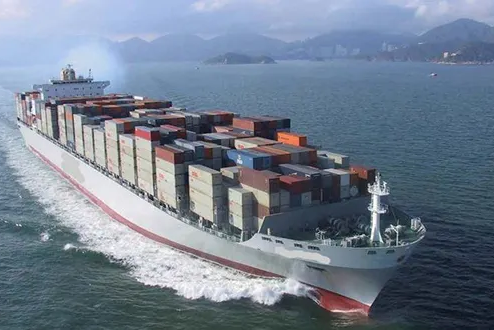Kontejnersko šifmanje je osnova globalne trgovine, omogućujući učinkovito i sigurno pomiještanje roba širom svijeta. S rastućom potrebom za međunarodnom trgovinom, poduzeća moraju razumjeti nuance kontejnerskog šifmanja kako bi optimirala svoje logističke operacije. Ovaj članak istražuje najbolje prakse i ključna razmatranja za maksimiziranje učinkovitosti u kontejnerskom šifmanju.
Razumijevanje kontejnerskog šifmanja
Plovidba kontejnera uključuje prijevoz roba u velikim, standardiziranim kontejnerima. Ovi kontejneri dolaze u različitim veličinama, a najčešće korištene su 20-stožarni i 40-stožarni kontejneri. Standardizacija omogućava neprekinuti prijenos između brodova, kamiona i vlakova, čime se postiže fleksibilan i učinkovit način prijevoza.
Glavna prednosti plovidbe kontejnera
Učinkovitost: Kontejneri su dizajnirani za jednostavno ručanje i stogovanje, što ubrzava proces opterećivanja i ispuštanja u luku. Ta učinkovitost se pretvara u brža prelazna vremena i smanjene troškove.
Sigurnost: Roba koja se prijevozi u kontejnerima manje je osetljiva na oštećenja i krađu. Robustna konstrukcija kontejnera pruža odličnu zaštitu od elemenata i mogućeg krađenja.
Ekonomska učinkovitost: Plovidba kontejnera općenito je ekonomičnije od drugih načina prijevoza, posebno za međunarodne dalekodaljne šute. Mogućnost spajanja više šuta u jedan kontejner dalje smanjuje troškove.
Povratnost: Kontejeri mogu nositi širok spektar roba, od sirovina i mašinerije do perećaše robe i gotovih proizvoda. Specijalizirani kontejneri, kao što su hlađeni (reefer), zadovoljavaju specifične potrebe poput upravljanja temperaturom.
Najbolje prakse za kontejnersku slanje
Izaberite odgovarajući tip kontejnera
Odabir odgovarajućeg tipa kontejnera ključan je za osigurivanje sigurne i učinkovite transportacije robe. Standardni suvi kontejneri prikladni su za većinu vrsta tereta, ali bi tvrtke trebale razmotriti specijalizirane kontejnere za specifične potrebe:
Hlađeni kontejneri (Reefers): Za perećašu robu koja zahtijeva kontrolu temperature.
Kontejneri s otvorenom vrhom: Za preveliku robu koja se ne može smjestiti u standardni kontejner.
Kontejneri s ravnicama: Za tešku i veliku robu poput mašinerije i vozila.
Optimizirajte korištenje kontejnera
Maksimiziranje korištenja dostupnog prostora unutar kontejnera može značajno smanjiti troškove slanja. Tvrtke bi trebale:
Pakirajte i stogajte robe ispravno: Osigurajte da je rob pakirana čvrsto i sigurno kako bi se spriječilo pomakivanje tijekom transporta.
Koristite palete i kliznje ploče: Omogućuju lako ručenje i učinkovito korištenje prostora.
Razmjerno distribuirajte težinu: Ravnoodaljeno distribuiranje težine kako biste održali stabilnost i spriječili štetu.
Uvedite napredne sustave praćenja
Stvarno-vremensko praćenje i nadzor prijevoza pružaju cijenjive uvide i poboljšavaju vidljivost tijekom cjelokupnog procesa slanja. Napredni sustavi praćenja nude:
Ažuriranja lokacije u stvarnom vremenu: Drže poslovne subjekte obavještenima o lokaciji i statusu njihovih prijevoza.
Nadzor stanja: Osigurajte da se temperature osjetljive robe drže unutar zahtijevanog raspona.
Prediktivna analitika: Očekujte moguće kašnjenja i optimizirajte rute za bržu dostavu.
Osigurajte poštivanje propisa
Poštivanje međunarodnih propisa za slanje je ključno za izbjegavanje kašnjenja i kazara. Poslovni subjekti trebaju:
Budite obavešteni o propisima trgovine: Držite se na dnevnom slijedu s propisima i zahtjevima carina za svaku odredišnu lokaciju u vezi sa uvozom i izvozom.
Pripremite točnu dokumentaciju: Osigurajte da su svi potrebni dokumenti, kao što su cekovi za prijevoz, certifikati porekla i carinske prijave, ispravno ispuni i dostavljeni u vrijeme.
Radite s iskusnim carinskim posrednicima: Omogućite jednostavnu carinsku proceduru i umanjite rizik od problema s komplijansom.
Ispostava tehnologije za poboljšanu učinkovitost
Tehnologija igra ključnu ulogu u optimiziranju operacija prijevoza kontejnera. Tvrtke bi trebale usvojiti:
Softver za upravljanje prijevozom: Uprostite proces rezerviranja, dokumentacije i praćenja.
Automatizirane sustave za ručanje teretom: Ubrzajte operacije opterećivanja i praznjenja na luku.
Blockchain tehnologiju: Poboljšajte prozirnost i sigurnost u lanac snabdevanja pružanjem nepromjenjivog zapisa transakcija i kretanja.
Ključne razmatranje za prijevoz kontejnera
Upravljanje troškovima
Troškovi slanja mogu značajno utjecati na dobitnost poslovanja. Ključne strategije za upravljanje troškovima uključuju:
Konzolidacija slanja: Spojite više slanja u jedan kontejner kako biste se koristili ekonomijama oblikovanja.
Pregovori o ugovorima: Osigurajte povoljne cijene i uvjete s brodogradilištima i transportnim pridružbama.
Optimizacija rute: Odaberite najefikasniju i najekonomičniju rutu kako biste minimizirali vrijeme prijevoza i smanjili potrošnju goriva.
Upravljanje rizicima
Upravljanje rizicima povezanim s kontejnerskim slanjem ključno je za osiguranje sigurne i vremenske dostave roba. Razmotrite sljedeće:
Osiguranje: Zaštitite se od mogućih
gubitaka zbog štete, krađe ili kašnjenja.
Planiranje izvjesća: Razvijte planove za rješavanje neočekivanih prekidaca, poput strikeova na luku ili prirodnih katastrofa.
Redovne revizije: Izvršite revizije procesa slanja i partnera kako biste identificirali i smanjili rizike.
Prakse održivog razvoja
Održivost postaje sve važnija u globalnoj logistici. Tvrtke mogu usvojiti ekološki prijateljske prakse kao što su:
Korištenje gorivo-efikasnih brodova: Odaberite pomorske linije koje koriste moderne, gorivo-efikasne brodove kako biste smanjili emisiju ugljičnog dioksida.
Uvođenje zelene ambalažne rješenja: Koristite ponovno se koristajuće i biodegradabilne materijale za ambalažu kako biste smanjili utjecaj na okoliš.
Neutraliziranje ugljičnih emisija: Sudjelujte u programima za kompenzaciju ugljičnih emisija kako biste neutralizirali ekološki otisak aktivnosti vezanih uz slanje.
Zaključak
Kontejnersko pomorstvo je ključni element međunarodnog trgovlja, pružajući učinkovitost, sigurnost i ekonomsku isplativost. Uvođenjem najboljih praksi poput odabira odgovarajućeg tipa kontejnera, optimizacije korištenja kontejnera, iskorištavanja naprednih praćenja sustava, osiguravanja zakonske uskladenosti i prihvaćanja tehnologije, tvrtke mogu maksimizirati prednosti kontejnerskog pomorstva. Pored toga, upravljanje troškovima, smanjenje rizika i uvođenje održivih praksi ključno su za održavanje konkurentnosti na globalnom tržištu.







































